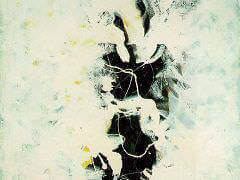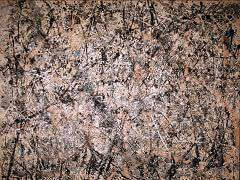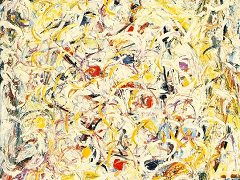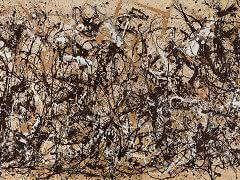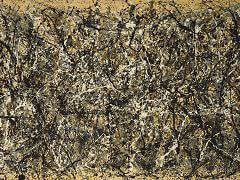Number 17A, 1948 by Jackson Pollock
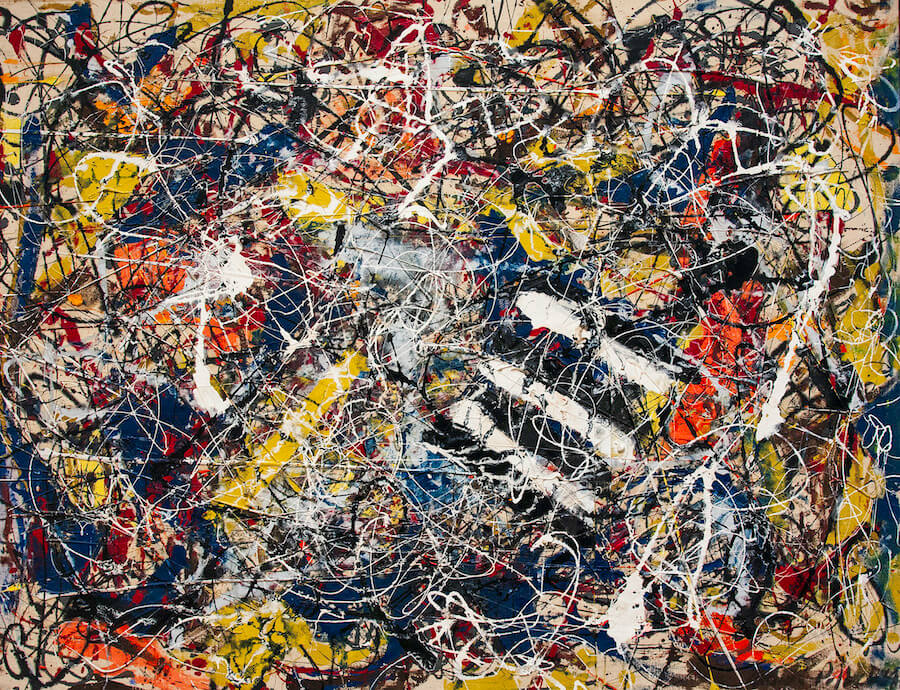
Number 17A, an oil on fiberboard and a good example of drip painting, was painted a year after Jackson Pollock introduced his famous drip technique. The abundance of paint creates a complex color vortex where the top and bottom layers are impossible to differentiate. Smudges of yellow, blue, and black on the fiberboard help soften the image, while three nearly-parallel white brushstrokes grab our attention and direct our gaze diagonally up the image.
Initially drip paintings by Pollock were met with great public scrutiny and were mostly unpopular and therefore had low value in art markets. This 1948 piece was featured in a 1949 Life magazine article that helped make Jackson Pollock a household name. In August 1949, Life magazine ran a feature story posing the question: "Jackson Pollock: Is he the greatest living painter in the United States?" The text was alternately mocking and respectful.
In 2015, Number 17A was sold by the David Geffen Foundation to Kenneth C. Griffin, an American hedge fund manager and billionaire, for $200 million. The price sets the world record for the most expensive painting ever sold at that point. The previous record was held by Water Serpents II by Gustav Klimt. Water Serpents II was sold in a private sale at $183.8 million in 2013.



